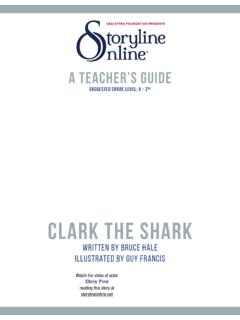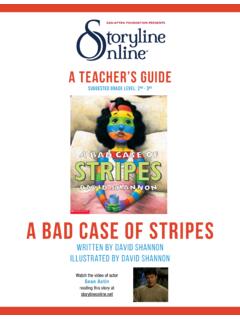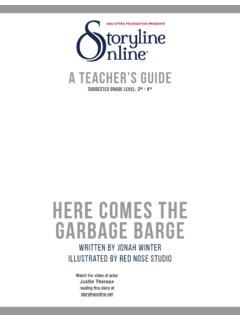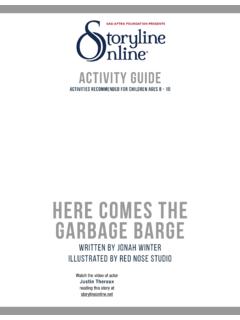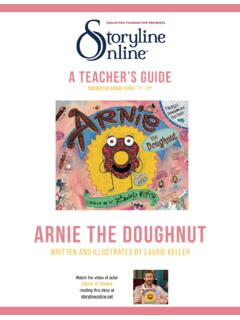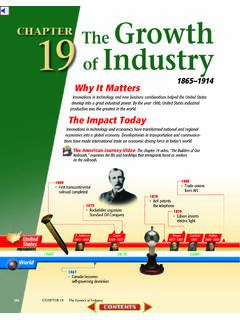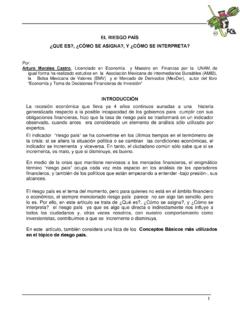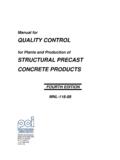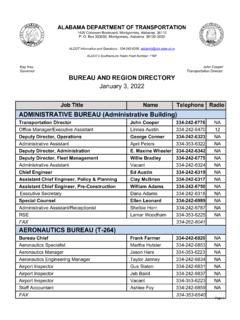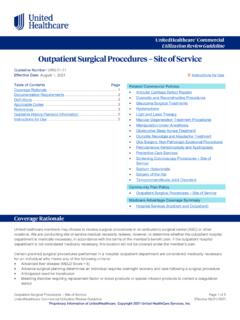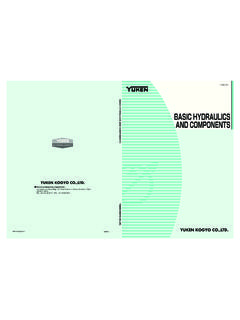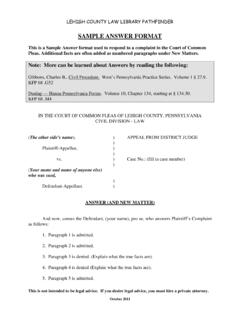Transcription of Carla’s sandwich - Storyline Online
1 A teacher s guideCarla s sandwichwritten by Debbie Hermanillustrated by Sheila Baileysuggested grade level: 2/3 Watch the video of actor Allison janney reading this story at This Guide: The purpose of this guide is to enhance the ELA curriculum by providing quality children s literature to engage students in listening to expressive read alouds. Suggested story related activities are aligned with ELA Common Core Standards. PAGE 2 A teacher s GUIDE carla s sandwich 2018 SAG-AFTRA FOUNDATION before readingduring readingAFTER readingreading and writingStandards: , background/tap knowledge: Have students create a 2 column chart: Foods I Like/Foods I Don t Like and make a list under each heading.
2 Put students in groups to discuss foods listed: How did the lists differ? Did everyone like/dislike the same foods? Whole class: Lead students in a discussion about the differences in tastes of the group. How were students tastes alike and different? How did you feel when most people in the group didn t like something you thought was tasty?Reading Focus: Character s Point of ViewStandards: , , ; , : Students will listen to story and answer teacher posed questions appropriately. Procedure: Stop periodically to ask questions/pose prompts such as: Ask students to show their opinion of the weird sandwiches by giving a thumbs up or thumbs down as each of Carla s sandwiches are introduced.
3 Why didn t anyone want to sit next to Carla? (they didn t like her sandwiches) Would you have reacted the same way as the characters in the story? Thumbs up/thumbs down Why does Buster decide to try the sandwich ? Why do you think the other characters decided to try the sandwich after Buster? (accept any reasonable answer) Were you surprised that Carla brought a peanut butter and jelly sandwich at the end of the story? Why? (accept any reasonable answer)Standards: , Objective: Students will create 3 comic strips showing 3 different narrative view points: Carla s, one story character, and a personal point of view. Materials: Example of comic strip, white paper, pencils, crayonsProcedure: Make sure students are familiar with comic strips by showing them an example.
4 Have students divide a sheet of paper in thirds. The first section will show a comic strip demonstrating Carla s point of view, the second section will demonstrate another story character s point of view, and the third section will demonstrate the student s personal point of view. Each comic strip will contain speech bubbles showing dialogue. After students have finished the assignment, have them compare and contrast their view point with that of the characters through class discussion. Lead students in a discussion about how the perspectives differed and This Guide: The purpose of this guide is to enhance the ELA curriculum by providing quality children s literature to engage students in listening to expressive read alouds.
5 Suggested story related activities are aligned with ELA Common Core Standards. PAGE 3 A teacher s GUIDE carla s sandwich 2018 SAG-AFTRA FOUNDATION reading responsewriting - prompt 1writing - prompt 2 Standards: ; , ; : Students will answer the prompt using at least two details from text to support the : Do you think Leslie, Natie, and Buster will be more willing to try new foods in the future? : ; : Students will write a narrative piece using grade appropriate sentence structure and : Carla s classmates make fun of her sandwich choices because they were different or unique. Write about a time when someone made fun of you because you liked something different.
6 How did this make you feel?Standards: ; : Students will write directions on how to make a sandwich using transition words, grade appropriate sentence structure, and proper : What is your favorite sandwich ? Think of what you need to make it and make a list of ingredients. Now write directions explaining how to make the sandwich . Alternative idea: After Science/Nutrition Activity listed below, have students give directions on how to make their original nutritious This Guide: The purpose of this guide is to enhance the ELA curriculum by providing quality children s literature to engage students in listening to expressive read alouds. Suggested story related activities are aligned with ELA Common Core Standards.
7 PAGE 4 A teacher s GUIDE carla s sandwich 2018 SAG-AFTRA FOUNDATION science/nutritionart: fruit and vegetable printssocial studiesacross the curriculum activitiesOBJECTIVE Students will identify a type of food from each food group and create a healthful Chart paper, paper platePROCEDURE Review the basic food groups with students. (For more information on food groups visit )Step 1: Divide the class into 4 groups: Vegetables Fruits Grains - Proteins. Step 2: Provide each group with a piece of chart paper and have them make a list of foods for their assigned food 3: Present findings and add foods if necessary. Step 4: Give each student a paper plate and have them divide it into quarters, labeling each quarter with a food group.
8 Step 5: Challenge students to use the class lists to create a nutritious sandwich , choosing at least one food from each group. Students should write each food choice on plate under the appropriate food Students will use fruits and vegetables to create prints. This introduces students to Art paper, Paint, Paint brushes, Sponges (one for each color paint), Cookie tray or Styrofoam tray, Fruits/veggies: carrots, mushrooms, cauliflower, broccoli, tomatoes, peppers, apples, starfruit, The basic idea is to dip fruits/veggies into paint and stamp them onto paper in random or ordered patterns. Paint can be poured onto sponges so that when an object is dipped into the paint, the sponge will only let off a little bit of paint.
9 Or, apply paint directly to the fruits/veggies using a paintbrush. You only need a small amount of paint on the object. Stamp the object onto a sheet of paper creating a pattern. Let idea: Use brown lunch bags or inexpensive cloth bags for students to stamp and design their own lunch Tolerance, and accepting differences Google It: Search tolerance to find a variety of grade specific lessons on accepting differences. About This Guide: The purpose of this guide is to enhance the ELA curriculum by providing quality children s literature to engage students in listening to expressive read alouds. Suggested story related activities are aligned with ELA Common Core Standards.
10 PAGE 5 A teacher s GUIDE carla s sandwich 2018 SAG-AFTRA FOUNDATION about Storyline onlineabout the sag-aftra foundationstoryline Online brought to you byThe SAG-AFTRA Foundation s children s literacy website Storyline Online streams imaginatively produced videos featuring celebrated actors to help inspire a love of reading. Storyline Online receives millions of views every month in hundreds of countries. Visit Storyline Online at SAG-AFTRA Foundation provides vital assistance and educational programming to the professionals of SAG-AFTRA while serving the public at large through its signature children s literacy program. Founded in 1985, the Foundation is a national non-profit organization that relies solely on support from grants, corporate sponsorships, and individual contributions to fund our programs.


